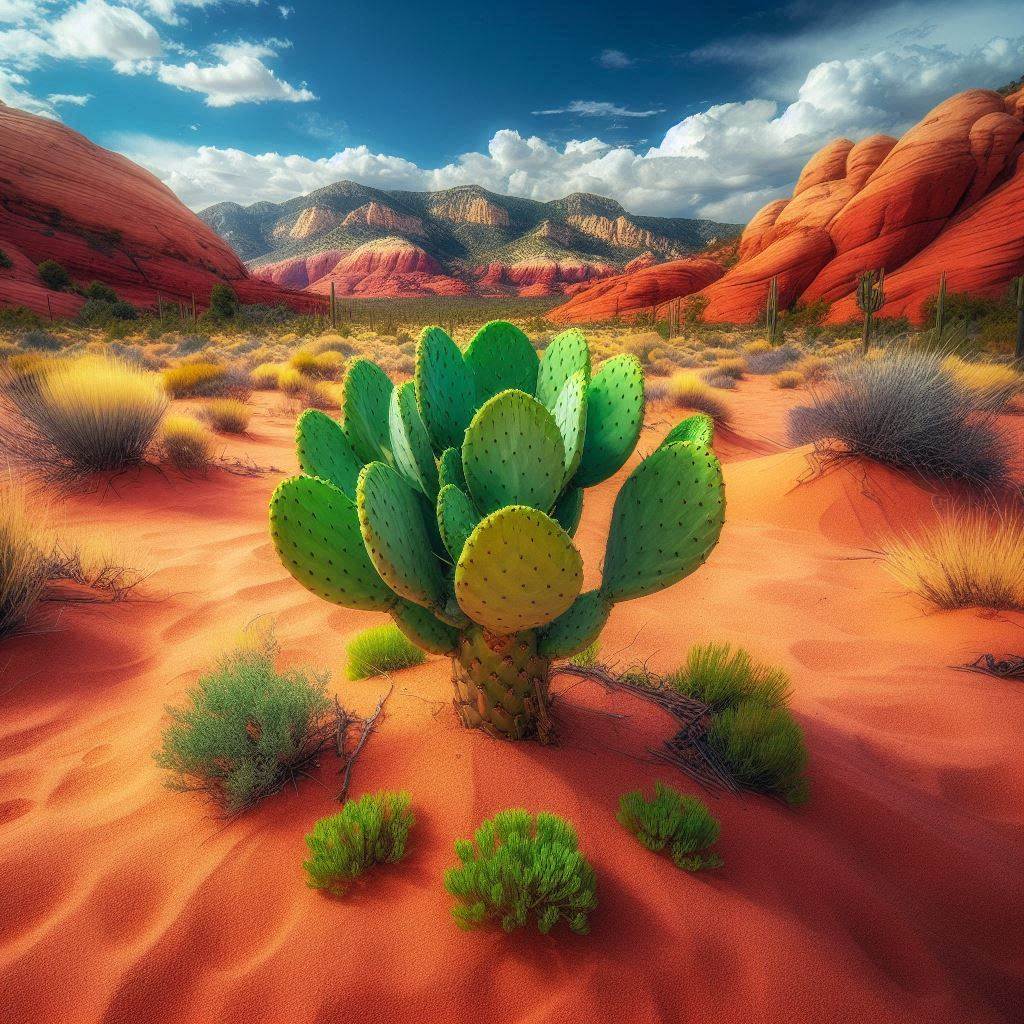Nopal
The Aztec culture, known for its deep connection to nature and profound knowledge of medicinal plants, held a remarkable secret for maintaining youth and vitality: the nopal. This cactus, which grows abundantly in Mexico, was revered by the Aztecs not only for its nutritional value but also for its extraordinary health benefits.
Nopal: the Aztec elixir
The Aztecs believed the nopal, or prickly pear cactus, possessed special powers that contributed to detoxifying the body and delaying the signs of aging. They consumed it regularly, considering it a natural elixir for maintaining youthfulness. The nopal acted as a detoxifier, aiding in the elimination of toxins and promoting overall health.
Nutritional powerhouse
The nopal is packed with essential nutrients. It contains high levels of fiber, vitamins (particularly vitamin C), minerals, and antioxidants. These components work together to protect cells from damage caused by free radicals, which are responsible for aging and various diseases. The antioxidants in nopal help reduce the appearance of wrinkles and keep the skin looking healthy and radiant.
Skin benefits
One of the key benefits of the nopal is its ability to enhance skin health. The high concentration of mucilage in the cactus helps retain moisture in the skin, effectively combating dryness. This property, combined with the presence of antioxidants and vitamin C, promotes a glowing and youthful complexion. The nopal’s moisturizing and protective qualities made it a vital component of the Aztec beauty regimen.
Cultural significance
The importance of nopal in Aztec culture is evident in its frequent depiction in ancient codices and historical documents. It played a significant role not only in their diet but also in their rituals and medicinal practices. The Aztecs cultivated nopal extensively, and its significance is immortalized in the legend of Tenochtitlan’s founding, where an eagle was seen devouring a snake on a cactus – a symbol that now adorns the Mexican national emblem.
Global spread of nopal
After the Spanish arrived in the Americas, the nopal was introduced to Europe, Africa, and Asia. It adapted well to various climates and soils, leading to its widespread cultivation. Despite its global reach, this cactus remains a cultural symbol and staple food in Mexico, featured in a variety of traditional dishes.
Modern recognition of nopal
In the 20th century, the plant gained recognition as a superfood due to its exceptional nutritional properties. It is consumed in salads, stews, juices, and used in food and cosmetic products. Ongoing research continues to explore its potential health benefits, including its role in regulating blood sugar levels in people with diabetes.
Cosmetic and pharmaceutical potential
The nopal’s “slime,” rich in mucilage and vitamin C, has shown promise in the creation of innovative cosmetic and pharmaceutical products. It strengthens the skin’s natural barrier, providing defense against environmental pollutants and UV radiation, making it a valuable ingredient in skincare.
The Aztecs’ secret to eternal youth lies in the humble nopal. Its detoxifying, moisturizing, and anti-aging properties made it a cornerstone of their health and beauty practices. Today, the nopal continues to be celebrated for its incredible benefits, embodying the timeless wisdom of the Aztec culture.

